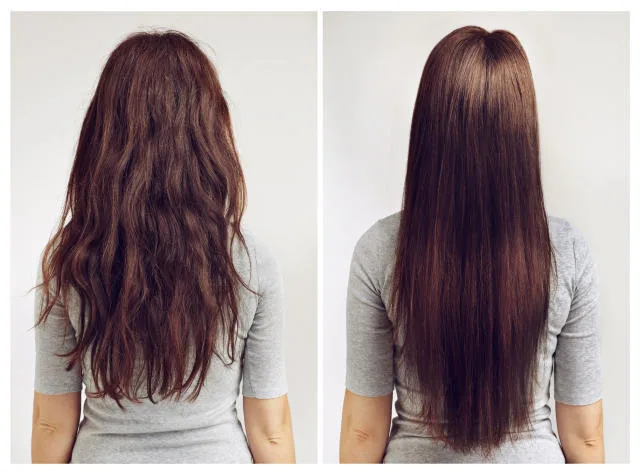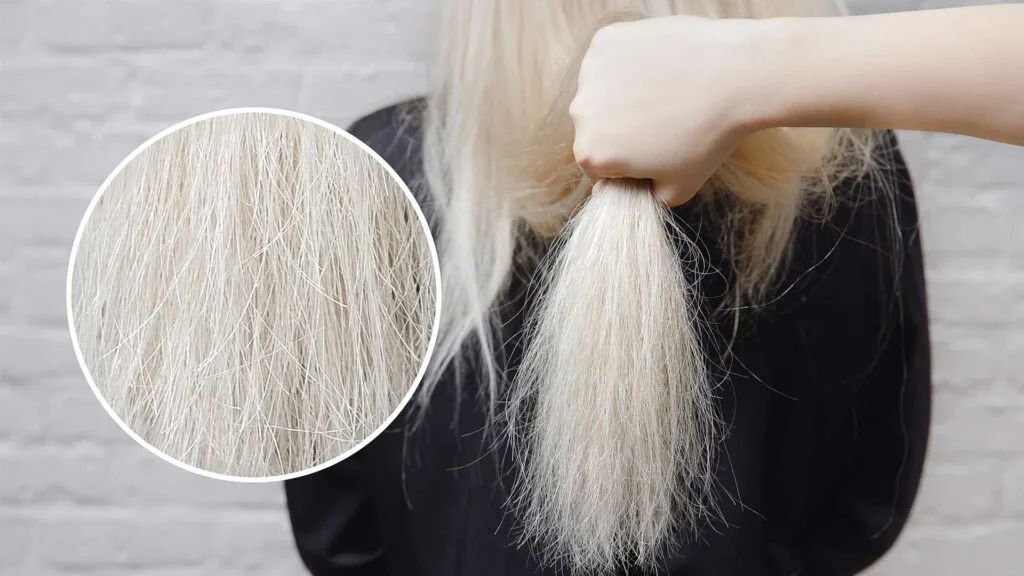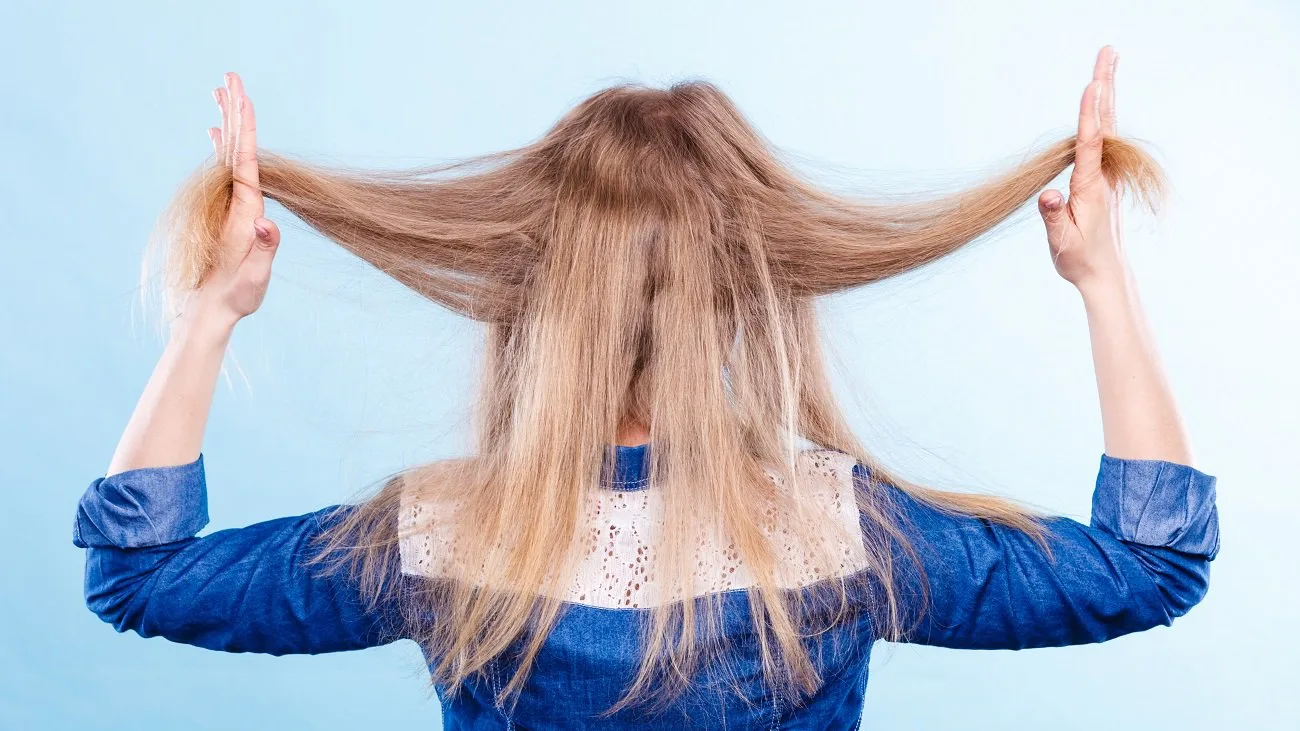In a world where style meets self-expression, the quest for perfectly sleek, straight hair is an ongoing journey. The allure of a polished mane often leads us to the familiar hum of straightening tools, promising a transformation from unruly curls to smooth sophistication. Yet, with every application, a lingering concern surfaces: How often can you straighten your hair without causing irreparable damage?
As we delve into the intricate tapestry of hair care, it becomes imperative to decipher the delicate balance between achieving the desired look and preserving the health of our precious locks. Let’s untangle the strands of uncertainty and empower ourselves with knowledge that goes beyond the surface of a straightened mane.
I. Straightening Your Hair: What is That?

Hair straightening is a cosmetic procedure used to temporarily alter the structure of the hair to achieve a straighter and smoother appearance. This process is especially popular among individuals with curly or wavy hair who desire a sleek and straight look. There are various methods and techniques for hair straightening, both temporary and semi-permanent. It involves using various tools or products to achieve the desired result.
II. Straightening Your Hair: Different Methods Of Hair Straightening
Here are some common methods:
Straightening Your Hair #1. Using Heat Styling Tools
One of the most common ways to straighten hair is using heat styling tools, such as flat irons or hair straighteners. These are heated tools that use direct heat to straighten the hair. The hair is sectioned, and each section is passed through the hot plates of the iron. While these tools can provide quick results, they can also be damaging if not used correctly.

Straightening Your Hair #2. Chemical Straightening:
Chemical straightening, also known as permanent hair straightening, involves the use of chemical treatments to alter the hair’s natural structure. This method provides longer-lasting results but requires careful consideration.
- Relaxers: Chemical relaxers contain ingredients like sodium hydroxide or guanidine hydroxide that break the protein bonds in the hair, making it straight. This process is semi-permanent and requires touch-ups as new hair grows.
- Keratin Treatments: These treatments use a protein called keratin to temporarily smooth and straighten the hair. The results can last for several weeks.
The choice of method depends on individual preferences, hair type, and the desired level of permanence. However, it’s important to note that excessive use of heat and chemical treatments can damage the hair over time.
III. How Does Hair Straightening Damage Your Natural Hair?
Hair straightening, especially when done using heat styling tools or chemical treatments, can potentially damage natural hair. Here are some ways in which hair straightening can affect your hair:
1. Heat Damage:

The use of flat irons, curling irons, or blow dryers at high temperatures can lead to heat damage. Excessive heat weakens the protein structure of the hair, making it more prone to breakage and split ends. Not only that, high heat can break down the protein structure in the hair, particularly keratin. This breakdown can result in weakened hair strands that are more susceptible to damage.
2. Chemical Damage:
Some people use chemical straightening treatments to achieve straight hair. Chemical straightening treatments can alter the structural composition of the hair shaft. Overuse or improper application of these chemicals can lead to weakened hair structure, damage, and hair breakage.

3. Dryness, Dehydration, and Moisture Imbalance:
Heat styling tools and certain chemical treatments can strip the hair of its natural oils, leading to dryness and dehydration. This can result in brittle and dull-looking hair. Besides, heat styling and chemical treatments can disrupt the natural moisture balance of the hair. This imbalance can lead to frizz, lack of elasticity, and increased vulnerability to damage.

The cumulative effect of regular heat styling or chemical treatments can lead to progressive damage over time. It’s important to allow the hair to recover between styling sessions and to use protective measures when applying heat.
IV. How To Minimize Damage When Straightening Your Hair?
To minimize damage during hair straightening, consider the following tips:
- Use Heat Protectants: Apply a heat protectant product before using heat styling tools to create a barrier between the hair and the heat.
- Limit Heat Exposure: Avoid excessive use of heat styling tools, and use them at lower temperatures when possible.
- Deep Conditioning: Use deep conditioning treatments to moisturize and nourish the hair, especially after heat styling or chemical treatments.
- Proper Hair Care: Maintaining a healthy hair care routine is vital. Use quality shampoos and conditioners, and consider using hair masks or hair serums to keep your locks nourished and strong. We’ll share tips on how to create the perfect hair care routine, even if you straighten it regularly
It’s important to note that everyone’s hair is different, and what works for one person may not work for another. If you have concerns about the impact of hair straightening on your specific hair type, it’s advisable to consult with a professional stylist for personalized advice.
V. How Often Can You Straighten Your Hair Without Damage?
The ideal straightening frequency varies from person to person and depends on factors like hair type and the chosen straightening method. Your hair type plays a significant role in determining how often you can straighten it. For example, individuals with thin or fine hair should be more cautious, while those with thicker hair can tolerate more frequent straightening. Reducing the frequency of hair straightening offers several benefits, including healthier hair, less damage, and reduced maintenance. Embrace your natural hair texture on days when you’re not straightening. Generally, it’s recommended to straighten your hair no more than 2 to 3 times a week. Besides, you don’t always need to straighten your hair to look stylish. Experiment with different hairstyles, such as braids, curls, or updos, to give your hair a break from heat.
VI. Conclusion
In conclusion, the frequency with which you can straighten your hair without causing damage depends on various factors, including your hair type, the quality of your styling tools, and your overall hair care routine. While it’s essential to embrace your natural texture and give your hair regular breaks from heat styling, there is no one-size-fits-all answer. Ultimately, moderation is key. Listen to your hair and pay attention to its needs. If you find yourself straightening your hair frequently, it’s crucial to balance it with proper care and nourishment. By adopting a thoughtful approach to styling and maintaining a healthy hair care routine, you can enjoy the versatility of straightened hair without sacrificing its overall health and vitality.